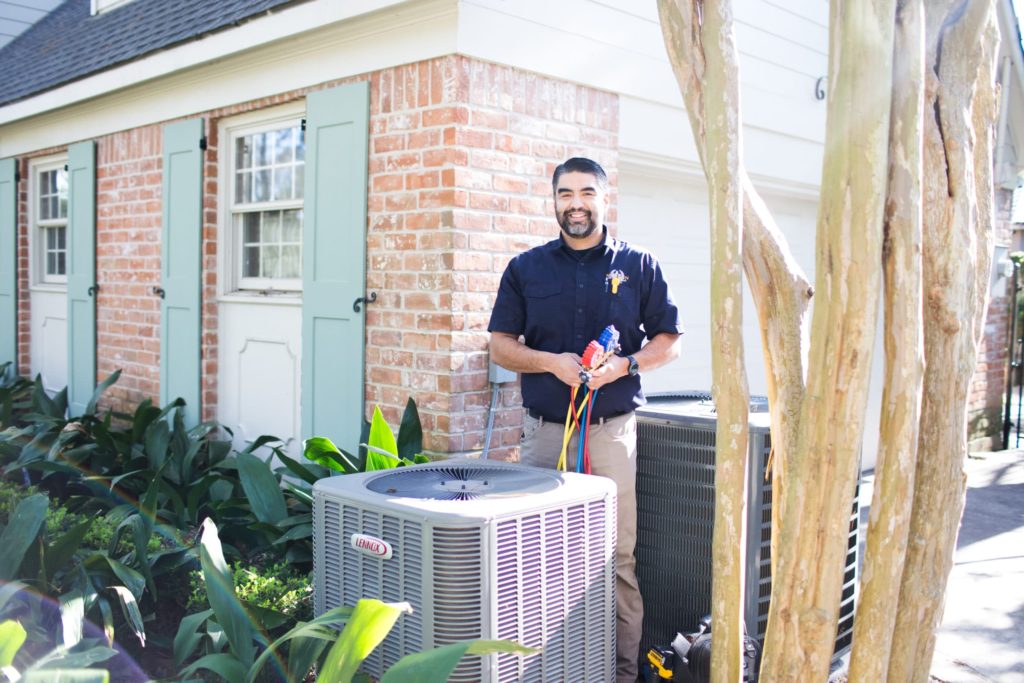

Sometimes what you thought was going to be a quick repair turns into a full system AC replacement. When you call Mission Air Conditioning and Plumbing for AC installation or replacement, you’ll receive an expert in-home consultation and a detailed plan of action. We are proud to provide the home installation services that Houston residents deserve. Give us a call today, and let us prove to you why homeowners in Memorial City area choose us when they are in need of fast and reliable air conditioning installation.
@missionairplumbin6Daikin AC Install in Houston, TX♬ Texas Sun – Khruangbin & Leon Bridges

Most central air conditioning systems last between 10 to 15 years. In Houston’s hot, humid climate, that timeline can vary. Factors like air conditioner maintenance, installation quality and daily usage all play a role in how long your unit will perform.
If your system is over a decade old and you’re noticing rising energy bills or recurring breakdowns, it may be time to consider replacement. We’ll assess your current system and let you know if air conditioner installation services are the best investment.
In Houston, the best time to schedule air conditioning replacement is during the cooler months, typically in late fall or early spring. While our team can install cooling systems at any time of year, there are benefits to scheduling a replacement during cooler times of the year. You’ll enjoy more flexible scheduling and ensure your home is ready before H-Town’s summer heat sets in.
That said, if your current system is struggling during a heatwave or can’t keep up with demand, don’t wait. Warning signs like frequent repairs, inconsistent temperatures or energy bills that keep climbing often signal it’s time to make the switch.
At Mission Air Conditioning and Plumbing, we help homeowners plan their replacements at the right time — with honest advice, upfront pricing and flexible financing options.
The key to a long-lasting, efficient AC system begins with a proper installation. Our team at Mission AC believes in sticking by our customers through the entire replacement process to ensure your new unit is the appropriate match for your home. We want your investment to give you exactly what you need, so we help you consider important factors like:
At Mission Air Conditioning and Plumbing we are committed to providing you with the services we would want for our own family. Each of our technicians attend twice-weekly training to provide you with high-quality technical and customer service.
Our up-to-date tools and technology guarantee you’re receiving the best equipment and the latest industry standards. To make sure we stand behind our promise to treat customers like family, we offer a no-breakdown guarantee or you’ll receive money back.
At Mission Air Conditioning and Plumbing, we don’t recommend replacements unless they’re truly necessary. Our goal is to keep your system running efficiently for as long as possible — and only suggest a new unit when it’s the right move for your comfort and budget.
When it’s time for a new AC, we make the process simple and transparent:
Replacing your AC doesn’t have to be stressful — not when you’ve got a team that’s honest, experienced and here to help every step of the way.
In Houston, where triple-digit temperatures and heavy humidity are part of everyday life, having a reliable cooling system isn’t optional — it’s essential. Whether you’re enjoying a weekend at Discovery Green or perusing Market Street in The Woodlands, coming home to consistent, cool air makes all the difference.
Upgrading your air conditioner offers several key benefits for H-Town homeowners:
At Mission Air Conditioning and Plumbing, we understand the demands of Southeast Texas weather. That’s why we offer energy-efficient air conditioning replacement Houston homeowners can depend on. Our installs are designed to keep your home comfortable and efficient year-round.
Life in H-Town is nearly unbearable without a working air conditioner – especially during the summer. When your AC system breaks down for the last time, call your home heroes at Mission Air Conditioning and Plumbing. We will get your old system replaced and a new one installed as quickly as possible to keep your home’s air clean and comfortable. Contact us today to begin a service request!
1630 Elmview Dr, Houston, TX 77080
(281) 502-8168
Hours
Monday – Friday: 7:00am – 7:00pm
Saturday: 8:00am – 4:00pm
Sunday: Closed





